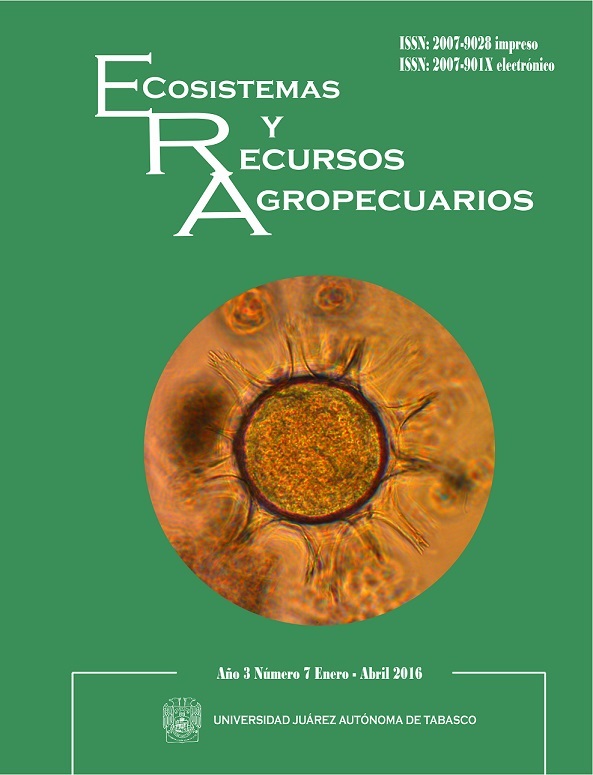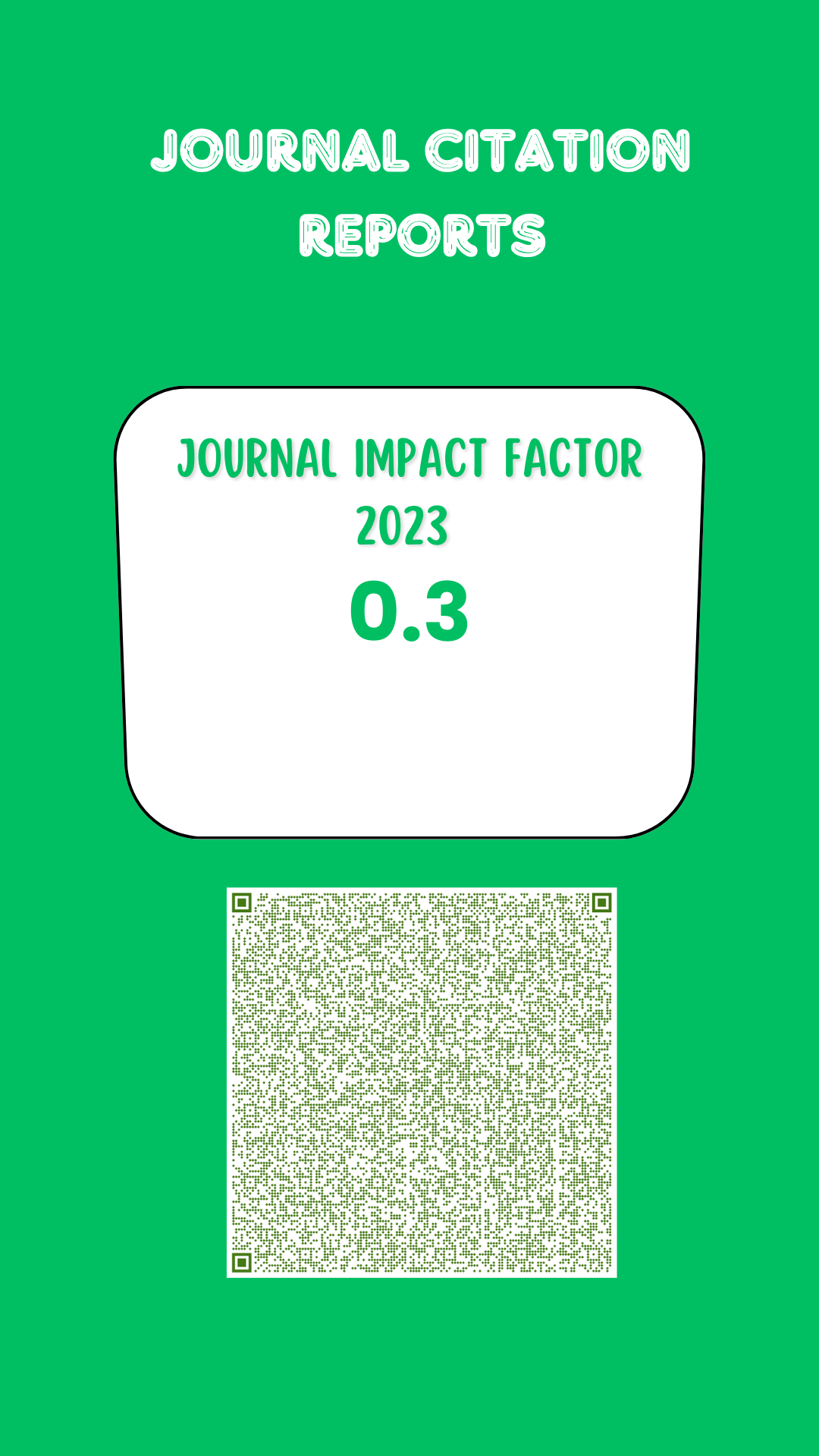COMPARACIÓN DE DOS MÉTODOS DE TRANSFERENCIA DE EMBRIONES EN EL GANADO CRIOLLO LECHERO TROPICAL
DOI:
https://doi.org/10.19136/era.a3n7.295Palabras clave:
América, criopreservación, curva lenta, vitrificaciónResumen
En el ganado Criollo Lechero Tropical (CLT), se desconoce el mejor método para la criopreservación de sus embriones para transferencia. El objetivo del estudio fue comparar los métodos por curva lenta y vitrificación en receptoras CLT puras y mestizas; se realizó en Veracruz (CP) y Guerrero (OG). Los tratamientos se asignaron de forma aleatoria: seis embriones para CLT y cuatro para mestizas por curva lenta, así como cinco en CLT y cinco en mestizas por vitrificación para CP. En OG, se destinaron cuatro para curva lenta en CLT y cinco en mestizas; para vitrificación, seis en CLT y cinco en mestizas. El análisis de datos se realizó con la prueba de Fisher. No se encontró efecto del método de criopreservación en el porcentaje de gestación (p>0.05) y se obtuvieron 10 y 20 % en CP (p ≤ 0.50), 11 y 27 % en OG (p ≤ 0.375) para curva lenta y vitrificación, respectivamente.
Descargas
Referencias
Alila H, Dowd J (1991) The control of corpus luteum function in domestic ruminants. Oxford Reviews of Reproductive Biology. 13: 203-237.
Baruselli PS, Marques MO, Carvalho NA, Valentim R, Berber RC, Carvalho AF, Madureira EH, Costa-Neto WP (2000). Ovsynch protocol with fixed-time embryo transfer increasing pregnancy rates in bovine recipientes. Acta Scientiae Veterinarie UFRGS, Porto Alegre, Brasil. 28 (suppl): 205 abstr.
Baruselli PS, Ferreira RM, Sá-Filho MF, Nasser FT, Rodrigues CA, Bó GA (2010) Bovine embryo transfer recipient synchronisation and management in tropical environments. Reproduction Fertility and Development. 22: 67-74.
Berg DK, Van-Leeuwen J, Beaumont S, Berg M, Pfeffer PL (2010) Embryo loss in cattle between days 7 and 16 of pregnancy. Theriogenology, 73: 250-260.
Bényei B, Komlósi I, Pécsi A, Pollott G, Heraldo CC, de Ocampos AC, Paula ML (2006) The effect of internal and external factors on bovine embryo transfer results in a tropical environment. Animal Reproduction Science. 93: 268-279.
Block J, Drost M, Monson RL, Rutledge JJ, Rivera RM, Paula-Lopez FF, Ocon OM, Kriniger III CE, Liu J, Hansen PJ (2003) Use of insulin-like growth factor-I during embryo culture and trearment of recipients with gonadotropin-releasing hormone to increase pregnancy rates following the transfer of in vitro-produced embryos to heat-stressed, lactating cows. Journal Animal Science. 81: 1590-1602.
Butler S, Phillips N, Boe-Hansen G, Bó G, Burns B, Dawson K, McGowan M (2011) Ovarian responses in Bos indicus heifers treated to synchronise ovulation with intravaginal progesterone releasing devices, oestradiol benzoate, prostaglandin F2α and equine chorionic gonadotrophin. Animal Reproduction Science. 129: 118-126.
Chase CC, Vargas CA, Hammond AC, Olson TA, Griffin JL, Murphy CN, Tewolde A, Fields MJ (2009) Embryo transfer in Angus and Brahman recipient cows: effect of methods of estrus synchronization on induced estrus and pregnancy. Revista Cientifica. 19(6): 630-638.
Chebel R, Demetrio D, Metzger J (2008) Factors affecting success of embryo collection and transfer in large dairy herds. Theriogenology. 69:98-106.
Dochi O, Takahashi K, Hirai T, Hayakawa H, Tanisawa M, Yamamoto Y, Koyama H (2008) The use of embryo transfer to produce pregnancies in repeat-breeding dairy cattle. Theriogenology, 69: 124–128.
Drost M, Abrose JD, Thatcheer MJ, Cantrell CK, Wolfsdorf KE, Hasler JF (1999) Conception rates after artificial insemination or embryo transfer in lactating dairy cows during summer in Florida. Theriogenology. 52: 1161-7.
Ealy AD, Drost M, Hasen PJ (1993) Developmental changes in embryonic resistance to adverse effects of maternal heat stress in cows. Journal of Dairy Science. 76: 2899-2905.
Elsden RP (1980) Bovine embryo transfer. Proc. Soc. Theriogenology. Omaha, NE USA. pp. 101-133.
FAO (1981) Recursos genéticos animales en américa latina. Estudio FAO: Producción y sanidad animal 22. http://www.fao.org/docrep/009/ah223s/AH223S00.htm#TOC (consultado Febrero 2014).
Fuentes S, de-la-Fuente M (2007) Tasas de gestación de novillas receptoras, sincronizadas con gonadotrofina coriónica equina u hormona folículo estimulante. Acta Scientiae Veterinariae. 35(3): s767-s772.
Garcia E (1988) Modificaciones al sistema de clasificación climática de Kôppen. Instituto de Geografía, Universidad Nacional Autónoma de México. México.
Gonzáles R, Velarde J, Zambrano S, Esté P (1997) Producción y transplante de embriones congelados de bovinos Criollo Limonero. Archivos Latinoamericanos de Producción Animal. Venezuela. 5(supl.1): 370-372.
Hafez E, Hafez B (2002) “Reproducción e Inseminación artificial en Animales”. DF., México. 7 ed, McGraw-Hill Interamericana.
Hasler JF, McCauley AD, Lathrop WF, Foote RH (1887) Effect of donor embryo-recipient interactions on pregnancy rate in a large-scale bovine embryo transfer program. Theriogenology. 27: 139-68.
Hasler JF (2001) Factors affecting frozen and fresh embryo transfer pregnancy rates in cattle. Theriogenology. 56(9): 1401-1415.
Hasler JF (2014) Forty years of embryo transfer in cattle: A review focusing on the journal Theriogenology, the growth of the industry in North America, and personal reminisces. Theriogenology. 81: 152-169.
Hernández J, Chase C, Hansen P (2004) Differences in heat tolerance between preimplantation embryos from Brahman, Romosinuano, and Angus Breeds. Journal of Dairy Science. 87:53-58.
Herzog K, Brockhan-Lûdemann M, Kaske M, Beindorff N, Pual V, Niemann H, Bollwein H (2010) Luteal blood flow is a more appropriate indicator for luteal function during the bovine estrous cycle tan luteal size. Theriogenology. 73: 691-697.
Hidalgo C, Gómez E, Prieto L, Duque P, Goyache F, Fernández L, Fernández I, Facal N, Díez C (2004) Pregnancy rate and metabolic profiles in cattle treated with propylene glycol prior to embryo transfer. Theriogenology. 62: 664-676.
Houghton P, Lemenager R, Moss G, Hendrix K (1990) Prediction of postpartum beef cow body composition using weight to height ratio and visual body condition score. Journal Animal Science. 68(5): 1428-1437.
Jousan DF, Hasen PJ (2004) Insulin-like growth factor-I as a survival factor for the bovine preimplantation embryo exposed to heat shock. Biology of Reproduction. 71: 1665-1670.
Kuwayama M (2007) Highly efficient vitrification for criopreservation of human oocytes and embryos: The CrioTop method. Theriogenology, 67:73-80.
Looney CR, Nelson JS, Schneider HJ, Forrest DW (2006) Improving fertility in beef cow recipients. Theriogenology, 65(1): 201-209.
Lozano DRR, Asprón MAP, Vásquez CGP, González EP, Aréchiga CFF 2010 Efecto del estrés calórico sobre la producción embrionaria en vacas superovuladas y la tasa de gestación en receptoras. Revista Mexicana en Ciencias Pecuarias. 1(3):189-203.
Mapletoft RJ (1980) Embryo transfer for the practitioner. Proc. 13th Annu. Meet. Am. Assoc. Bovine Pract. Toronto, Canadá. pp. 154-162.
Mapletoft RJ (1982) Superovulation and recovery of ova from the bovine. Proc. Owners and Managers Workshop- VII Ann. Meet. IETS, Denver, Colorado USA. Pp. 37-47.
Martínez D (2008) Situación actual de la transferencia de embrionaria. Revisión y actualización. Frisona Española. A. Coruña. 164: 72-78.
Martinez A, Valcárcel A (2008) Vitrificación de embriones bovinos obtenidos in vitro. Reproduction. 23: 23-33.
Oyuela LA, Jiménez C (2010) Factores que afectan la tasa de preñez en programas de transferencia de embriones. Medicine Veterinary and Zootechnics. 57: 191-200.
Pariacote F (2000) Riesgos de extinción del conglomerado nativo de genes bovinos en América Latina. Caso Venezuela. Departamento de producción animal. Archivos de Zootecnia. Venezuela. 49: 17-26.
Putney D, Mullins S, Thatcher W, Drost M, Gross T (1989) Embryonic development in superovulated dairy cattle exposed to elevated ambient temperatures between the onset of estrus and insemination. Animal Reproduction Science. 19: 37-51.
Remsen LG, Roussel JD (1982) Pregnancy rates relating plasma progesterone levels in recipient heifers at day of transfer. Theriogenology. 18.
Rodríguez M, Giraldo C, Castañeda S, Ruiz T, Olivera M (2007) Análisis multifactorial de las tasas de preñez en programas de transferencia de embriones en Colombia. Medicine Veterinary and Zootechnics Córdoba. Colombia. 12(2): 978-984.
Rodríguez C, Teixeria A, Ferreira R, Ayres H, Mancilha R, Souza A, Baruselli P (2010) Effect of fixed-time embryo transfer on reproductive efficiency in high-producing repeat-breeder Holstein cows. Animal Reproduction Science. 118: 110-117.
Santellano E, Becerril CM, Mei Y, Gianola D, Torres G, Ramírez R, Domínguez J, Rosendo A (2011) Caracterización de la lactancia y evaluación genética del ganado Criollo Lechero Tropical utilizando un modelo re regresión aleatoria. Agrociencía. 45:165-175.
SAS Institute Inc (2008) SAS/STAT® 9.2 User´s Guide. Cary, NC: SAS Institute Inc.
Sakatani M, Kobayashi S, Takahashi M (2003) Effects of heat shock on in vitro development and intracellular oxidative state of bovine preimplantation embryos. Molecular Reproduction and Development. 67: 77-82.
SIAP (2013) Boletín de leche enero-marzo de 2013. Servicio de Información Agroalimentaria y Pesquera. Secretaria de Agricultura, Desarrollo Rural, Pesca y Alimentación. 1-64.
Stroud B, Hasler JF (2006) Dissecting why superovulation and embryo transfer usually work on some farms but not on others. Theriogenology. 65: 65-76.
Thacher WW, Moreira J, Santos JE, Mattos RC, Lopez FL, Pancarci SM, Risco AC (2001) Effects of hormonal treatments on reproductive performance and embryo production. Theriogenology. 55(1): 75-89.
Tovío L, Duica A, Grajales L (2008) Desarrollo embrionario y estrategias antiluteoliticas hormonales en programas de transplante de embriones bovinos. Medicine Veterinary and Zootechnics Córdoba. 13(1):1240-1251.
Vieira LM, Rodrigues CA, Mendanha MF, Sá-Filho MF, Sales JN, Souza AH, Santos JE, Baruselli PS (2014) Donor category and seasonal climate associated with embryo production and survival in multiple ovulation and embryo transfer programs in Holstein cattle. Theriogenology. 30: 1-9.
Wright JM (1981) Nom-surgical embryo transfer in cattle. Theriogenology. 15: 43-56.
Youngs C (2011) Cryopreservation of preimplantation embryos of cattle, sheep, and goats. Journal Visualized Experiments. 54.
Publicado
Número
Sección
Licencia
1. Política propuesta para revistas de acceso abierto
Los autores/as que publiquen en esta revista aceptan las siguientes condiciones:
1. Los autores/as conservan los derechos de autor y ceden a la revista el derecho de la primera publicación, con el trabajo registrado con la licencia internacional Creative Commons Reconocimiento-No comercial-Compartir igual 4.0 .de atribución de Creative Commons, que permite a terceros utilizar lo publicado siempre que mencionen la autoría del trabajo y a la primera publicación en esta revista.
2. Los autores/as pueden realizar otros acuerdos contractuales independientes y adicionales para la distribución no exclusiva de la versión del artículo publicado en esta revista (p. ej., incluirlo en un repositorio institucional o publicarlo en un libro) siempre que indiquen claramente que el trabajo se publicó por primera vez en esta revista.
3. Se permite y recomienda a los autores/as a publicar su trabajo en Internet (por ejemplo en páginas institucionales o personales) antes y durante el proceso de revisión y publicación, ya que puede conducir a intercambios productivos y a una mayor y más rápida difusión del trabajo publicado (vea The Effect of Open Access).

Este trabajo está sujeto a una licencia internacional Creative Commons Reconocimiento-No comercial-Compartir igual 4.0 .



